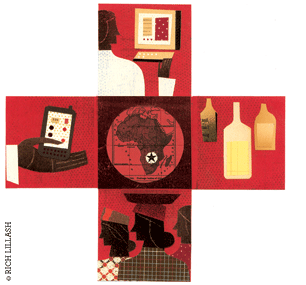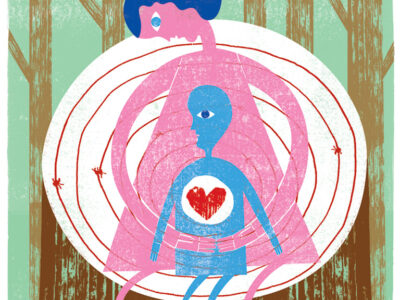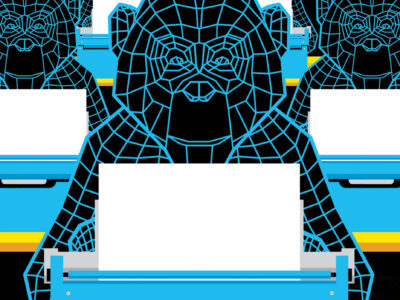
How can a cellphone screen for cancer? Just add vinegar—at least that’s what Carrie Kovarik, an assistant professor of dermatology and a member of the Penn-Botswana program [“Prognosis Botswana,” Mar|Apr 2007], has come up with in a recent effort to bring mobile telemedicine to parts of the developing world that lack the tools to carry out traditional diagnostic methods.
In a recent pilot project involving 1,500 women in Botswana, Kovarik and her colleagues used a telemedicine approach to screen for cervical cancer without having to perform a pap smear—a procedure that generates tissue samples that must be sent to a lab, which in rural areas is slow and prohibitively expensive. Instead, they simply applied vinegar—4 percent acetic acid, technically—to the cervix, which causes pre-cancerous cells to dehydrate faster than normal cells, and turn white. Like dye on a microscope slide, the contrast is clear enough that even a cellphone camera shot of the lesion is enough for accurate diagnosis.
The project supplied local health workers with camera-equipped smartphones loaded with software that can send those pictures to a specialist in Gaborone, or all the way to a faculty member at Penn. Wireless reception in Botswana is excellent, says Ryan Littman-Quinn, the telemedicine program manager. The country’s cellular data network is actually more reliable than a landline Internet connection, and now that many smartphones come standard with 5-megapixel cameras, the image quality is adequate.
The software is supplied by ClickDiagnostics, whose smartphone application collects relevant diagnostic information along with the picture and then transmits the whole package to a website, where it can be viewed from anywhere in the world.
The ability to connect rapidly to specialists removes a huge burden from rural patients, who would otherwise be forced to travel to a major city—an expensive trip that could take days on the bus, and would mean lost wages. Undertaking such a journey just to be screened often doesn’t make sense. Many times, says Littman-Quinn, patients therefore don’t see a doctor until a problem has gotten so bad they can’t work. By making screening easier, this program might encourage women to seek treatment earlier.
The long-term aim of the project, though, is not to outsource Botswana’s radiology needs, but to create a sustainable, multi-disciplinary telemedicine program in Botswana, says Kovarik, a program that would include local physicians.
—Sean Whiteman LPS’11




